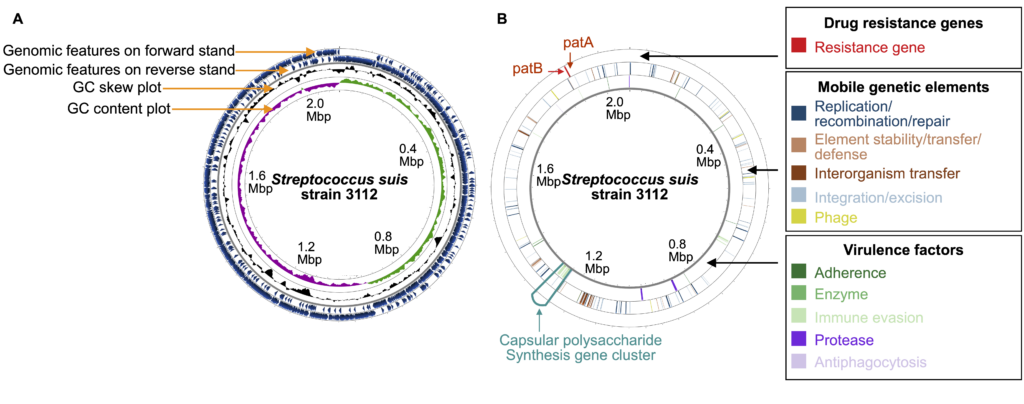Uncovering a new threat to aquatic species: Streptococcus suis 3112 genome sequenced

In a recent study published in BMC Genomics, researchers have identified and sequenced the first isolate of Streptococcus suis (S. suis) capable of infecting fish. Previously recognised as a swine and human pathogen, the discovery of S. suis strain 3112 in snakeskin gourami, an economically important fish species in Southeast Asia, expands the host range of S. suis and raises concerns about its potential impact on aquaculture.
The research chracterises the pathogen’s genomic structure, identifying it as serotype 6, sequence type 2340, with a likely swine origin. This marks a significant improvement in understanding the cross-species threat posed by this bacterium. Furthermore, the bacterium shows resistance to norfloxacin, a fluoroquinolone drug, posing challenges for treatment. However, it remains sensitive to other fluoroquinolones, including ciprofloxacin, enrofloxacin, and sparfloxacin, as well as to other antibiotics such as β-lactams, tetracyclines, sulphonamides, and aminoglycosides.
This study not only improves our understanding of the genomics and pathogenic traits of S. suis in fish, but also provides crucial information for the development of effective control strategies, helping to protect aquaculture and the economies that depend on it.
Read the full study here.
Pakorn Aiewsakun
Corresponding author

